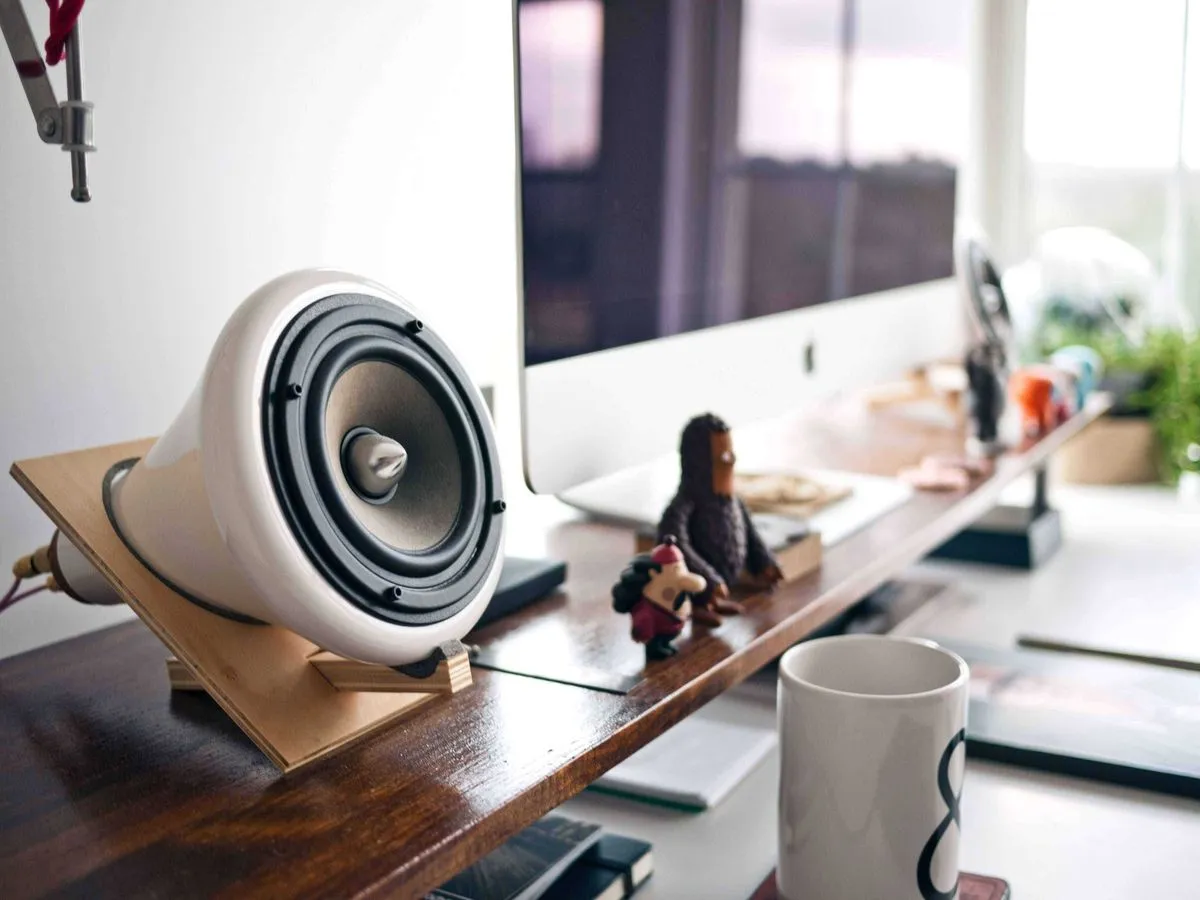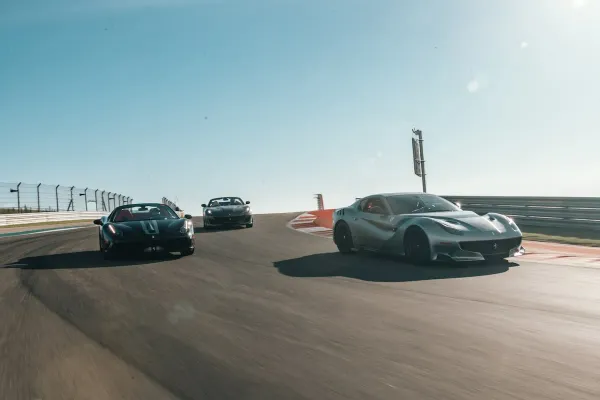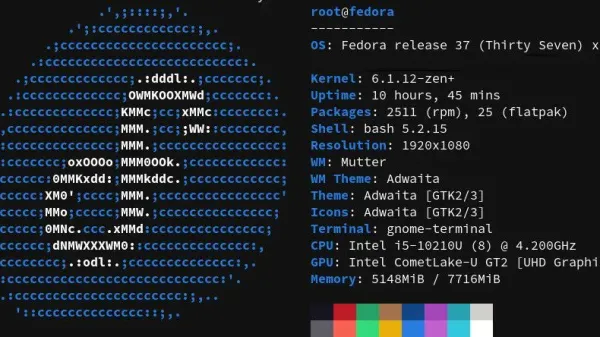Today I'm going to do the world a small service and dispel the many myths floating around out there about TOSLINK fiber optic audio connections. I recently purchased a set of Edifier S2000Pro monitors and wanted to take full advantage of their sound capabilities. Rather than just having the usual RCA jacks I'm accustomed to, this new set of speakers had lots of options to choose from. I wanted to know which connection option was going to give me the highest level of audio quality. After comparing RCA to Bluetooth v4, and TOSLINK, I decided that TOSLINK looked like pretty compelling connectivity option because it's the only one that is insusceptible to magnetic interference, doesn't cause ground loops, and supports uncompressed digitally transmitted audio. Since everything I listen to is in digital format, an optical cable seemed like a great bet. Plus, being an armchair quantum physics enthusiast, I found the idea of transmitting sound as photons of light to be pretty cool.
Want to say thanks for an ad-free, subscription free experience and top-notch content?
 Buy
me a coffee
Buy
me a coffee
I knew my new speakers supported playing audio at up to 192khz with a 24-bit word length and I found a sound card with an optical output to match them. For those who don't know, in digital audio, "bit-depth" or "word length" refers to the size of the data chunks sampled per second and "hz" or "khz" is a symbolic carryover term from the analog days that now refers to the number of data chunks sampled per second. So 24-bit size chunks of data are going to be stuffed full of more information than 16-bit chunks and at 192khz, twice as many of those juicy 24-bit chunks are going to be delivered per second than at say, 92khz. In theory, the more information you have to describe a waveform, the more crisp, clear, dimensional, and amazing your audio is going to sound. Since 192khz at 24-bits was the top of what I had to work with, I made that my goal for my little audio cable project. Now all I needed to know to seal the deal was that a TOSLINK cable could support the maximum sample rate of my speakers and future sound card. If it could, I'd go with it. Little did I know the kind of rabbit hole I was about to jump down as I went on Google to find out what the answer was. The first hit for my search was Wikipedia, which gave this surprisingly vague information on the matter:
[TOSLINK] Originally limited to 48 kHz at 20 bits. Extended to support all modern formats (Depending on manufacture and specification)
I was hoping something more along the lines of "...TOSLINK cables now support a maximum digital audio sample resolution of (insert actual bit-rate and frequency numbers here)," but instead I'm apparently being told that the capabilities have been extended to be virtually limitless and only constrained by whatever humans have managed to dream up so far - so long as "the manufacturer" specifies that it exists with their product, it is reality. At least the transfer speed information was provided. This has apparently been upgraded since first being released at 3.1 mbps and now, according to the wiki, supports up to a 125 mbits data transfer rate per second. In theory, that should be more than sufficient to handle anything my speakers are capable of receiving. Even a massive 24/192 BWF (broadcast wave format) file runs at about 4.6 mbps, which makes the maximum supported data transfer value of a TOSLINK cable just over 27 times faster than anything I would ever need. Still, before buying a rather expensive audio card with support for 24-bit 192khz audio output over TOSLINK, I wanted to see that written somewhere in a more concrete way. I guess I could have just taken that data transfer rate information and run with it, but it didn't directly answer my question, so I felt like it was a bit too cloudy for me to accept as an authoritative answer.
Next, I found an answered Quora question that appeared to be swimming with smart responses from audiophile sounding people who seemed to know loads of big audio industry terms and tons of things about stuff. They even had a condescending vibe going to prove it. One of the responders even listed in his title that he worked in "consumer electronics/design" - I mean, you can't get anymore legitimate than that, can you? Anyway, the claim made here was:
[Optical] S/P-Dif stereo interface....can support up to a 48 kHz sample rate (which allows up to +12.5% varispeed, so effectively, 54 kHz)
I could feel the doubt creeping in now. My dream of getting a new sound card and listening to ultra high definition audio via photons of light was dying fast and I knew it. Further Googling lead me deeper and deeper into the gray and each new web page carried me to lower and lower audio resolutions, with the only deviation being an occasional confident sounding Mac user claiming that 92000hz/92khz is the absolute maximum resolution possible. In between, I skimmed through horror stories about how TOSLINK fails hard when it's pushed past whatever maximum audio resolution it can handle. I imagined going to all the trouble of installing a new sound card, ordering audio cables, and then setting everything up only to sit and watch my media player's progress indicator slowly move forward in total silence. And it got worse - many claimed you can only have a maximum optical chord length of 6-feet (3-feet being ideal) or you'll anger the TOSLINK gods or something along those lines and face horrible consequences.
Things were looking pretty bleak and my new little project had rapidly devolved from the ideal of enjoying the best audio quality possible, to crying in a silent room while staring down the bad end of sad, stubby, little fiber optic cable (Okay, fine - maybe it wouldn't be quite that dramatic, but you get the point). Then my hopes started to rise as I read a thread where members of one forum claimed 24-bits at 192khz was possible, albeit not reliable. As I neared the bottom of that thread, one member seemed to have all the answers I wanted to hear. This person claimed:
A multimode glass or quartz optical fibre (like high-end TOSLINK cables) should be capable of 1 to 5GHz over a 1km link
Sure 1 to 5ghz is a massive variable range and who knows where it came from, but despite all this, after crosschecking the user's hypothesis I found many other people who confirmed this to be an absolute truth. I had a new tab open now on Amazon.com and already had a search going for "quartz TOSLINK cables." Within minutes my cart contained the magical object of yore that would assuage all of my 1st world audio woes. I rushed to the checkout and was about to click the big golden "place your order" button, when I had a moment of clarity - I was about to spend more on a cable than my audio card. Did I really want to do that? How trustworthy were all these random people on the Internet and how accurate was their defacto advice?
In the end, the frugal side of me won out and I decided to take a calculated risk. I knew that the sound card I was planning to buy could send at the bit-rate and frequency rate I wanted. I knew I had speakers that could receive data at that rate, and according to Wikipedia, any old TOSLINK cable should be able to support data speeds that were over 27 times faster than what I needed to reach a 24-bit, 192000hz audio data transfer rate. In a veritable act of defiance to the internet, I purchased a 10-foot all plastic TOSLINK cable for $9 on Amazon with my new sound card. Then I waited for everything to show up. My new cable and card both wound up arriving on the same day. After installing my new card, configuring iTunes to play at 24/192, loading up some uncompressed ultra high definition audio to match it, and connecting everything up with my super budget friendly cable, I'm happy to report that for the past month, I've been listening to some of the best sounding, highest resolution music I've ever enjoyed.
The takeaway from my TOSLINK journey
- TOSLINK cables can easily handle 24-bit 192khz sound -IF- you have devices that can both send and receive at that resolution
- TOSLINK is a specific type of single-mode fiber optic cable made from plastic. It has a large 1mm core, and transmits over a red LED originated light wavelength that peaks at 650nm.
- The 3 and six-foot maximum recommended length for optical cable is a myth. TOSLINK cable is actually designed to carry larger amounts of data more quickly and reliably over longer distances than traditional copper wire cable. Because it doesn't suffer from the kind of falloff issues you see in low voltage electrical signal transmission, it's a superior choice for long range high-definition audio transmission.
- Toshiba, the originator of TOSLINK as well as its namesake (Toshiba-Link) recommends a maximum length of 32.8 feet for optimal audio quality as a general guideline. There's actual science to estimate fiber optic cable data integrity per foot too. In my case, to play it safe and over-accommodate for my cheap 10-foot cable, I jacked up the signal degradation in my formula to 99% per km. Multiplying 99% by 0.003048 km (10 feet) gave me a worse case real world scenario of 0.00301752% (just over 3/1000ths) data loss. No offense, but if you think you can hear that, you might be better off investing in a psychiatric evaluation than a more expensive optical cable.
- To enjoy incredible audio, you don't need a cable that's made out of glass, quartz, Himalayan rock salt, or any other unnecessarily overpriced materials - unless you're looking to make your TOSLINK a strange symbol of your social status. If that's the case, go right ahead.
- There are people that know lots of useful stuff about audio that hang out on Quora. In some cases, the information they provide might be slightly outdated - do your research, and if all else fails, use your head
- There are apparently a lot of people who have older Macs with audio cards that featured TOSLINK ports and a max audio resolution of 96khz. For whatever reason, these same people decided to conclude that if their computers don't support a 192khz optical output, no one else's can either. Sadly, they've done a good job pinning all of the blame on a "TOSLINK limitation" and evangelizing that idea on the web, despite Apple having a KB that clearly says otherwise.








